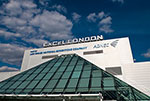NGPod® features in this month's NNNG Newsletter
It was a privilege to contribute to the National Nutritional Nurses Group April Newsletter article focusing on the recent BAPEN Nasogastric Tube Special Interest Group and NHS Innovations, Healthcare Services Investigation Branch reports into nasogastric tube safety.
Both reports identify a myriad of patient safety and human factors problems associated with current NGT confirmation methods, resulting in NHS Improvement (formerly National Patient Safety Agency) issuing six patient safety alerts between 2005 and 2016. Despite these reports and tremendous efforts by the clinical community in the UK, the number of Never Events associated with the use of misplaced nasogastric tubes continues to rise.


NGPod: A game-changer for NG tube placement and patient safety
Our response to the article by Georgie Adams highlights the game-changing difference that NGPod can make to patient safety in nasogastric tube confirmation by eliminating or significantly reducing most of the problems associated with current placement confirmation methods.
You can read the full article along with more industry news over at https://www.nnng.org.uk/2021/04/ngpod/
Findings from the HSIB's Investigation
The HSIB report clarifies that current testing methods for NGT position are significant contributors to NGT Never Events, noting that;
- Error prone.
“…both pH testing and use of X-ray are prone to error…” - Complex and unreliable.
“…using pH testing strips is potentially unreliable and its complexity underestimated…”. “The investigation also identified concerns about the reliability and usability of pH strips.” - Unstandardised.
“There is no standard process on how to read a pH strip.” - Difficulty obtaining aspirate.
“In two of the Never Event reports, the nursing team was not able to get any aspirates for pH checks…These scenarios are common…” - Lighting can affect outcomes.
“The environment within which pH testing strips are being interpreted can increase the risk of error. In the reference event, this was particularly noted with the poorly lit environment.” - A range of causes.
“…causes included misinterpretation of pH testing of gastric aspirate, use of outdated checking methods…” - Difficult X-ray interpretation.
“…incorrect X-ray confirmation and interpretation is the most common cause of NG tube incidents.”. “…misinterpretation of X-rays by medical staff was the most common cause of placement errors.”

How NGPod overcomes the current problems
NGPod either overcomes or significantly reduces many of the factors identified as contributing to Never Events related to the use of misplaced NGTs
It's is a handheld bedside test of pH that fits into current guidelines and patient pathways as a 1st line pH test, replacing the need to obtain gastric aspirate and the use of pH strips.
The device is used for initial NGT insertion and repeats checks, which means clinical staff use the same NGT placement confirmation test regardless of the use situation.
NGPod also works with any nasogastric tube that is 6FR or above. This compatibility with all manufacturers NGTs means that clinicians do not need to change any other part of their NG feeding system or clinical pathway to implement NGPOD.
The device has also completed its multi-centre clinical trial, and is as reliable as existing methods. Furthermore, the device:
- Provides a pH test result significantly more often than aspirate and pH strips
- Gives a result more rapidly than aspirate and pH strips, reducing clinical staff time to complete the test and staff exposure time to patients
- Gives a clear pH </= 5.5 Yes/No result with no need for user interpretation
- Does not require aspirate to be obtained
- Is very easy to learn to use
- Reduces the need for x-rays reducing patient exposure, reduces the risk of misinterpretation of x-rays and resource demand in radiology
- Reduces delays to patients receiving their prescribed nutrition, hydration and medication, which may improve recovery

Cost impacts of switching to NGPod
Based on the data from the NGPOD Multi-centre trial, NGPOD is less expensive than existing methods of NGT placement confirmation due to the reductions in staff time to perform the test and the reduction in x-rays.
Previous clinical studies show that aspirate cannot be obtained in up to 45% of attempts (Borsci, 2018), it is likely that in real-world situations, the cost savings will be even more significant than those shown in the NGPOD trial.

Given the additional difficulties in using pH aspirate and pH strips when donning and doffing PPE continuously while caring for Covid-19 patients, NGPOD may offer significant advantages by reducing time to test because of the removal of the need to obtain aspirate and the need to interpret the result of a pH strip. Reduction of x-rays may also reduce the number of clinical staff exposed to patients.
Support and training
NGPod Global fully support healthcare organisations through the evaluation and implementation of the NGPOD system. In April 2021, the NGPOD training App will be launched, providing support on-demand in clinical settings and a certification process for operators that clinical leaders can monitor.
Get NGPod
NGPod is available from NHS Supply Chain in England now on the enteral consumables framework and direct from NGPOD Global, making it easy for any UK healthcare organisation to adopt.
Recent Articles about Patient Safety
WHAT IS NGPOD?
NGPod: Stop "Never Events", improve patient recovery and reduce costs
The NGPod handheld devices overcomes many of the risks associated with existing Nasogastric placement confirmation methods.
- No aspiration required
- No interpretation required. Get a clear "Yes/No" answer
- Rapid result [c.15 seconds]
- Reduce delays to patients treatment, hydration and nutrition
- More cost-effective than testing with pH strips






.jpg)


%20(1).jpg)







